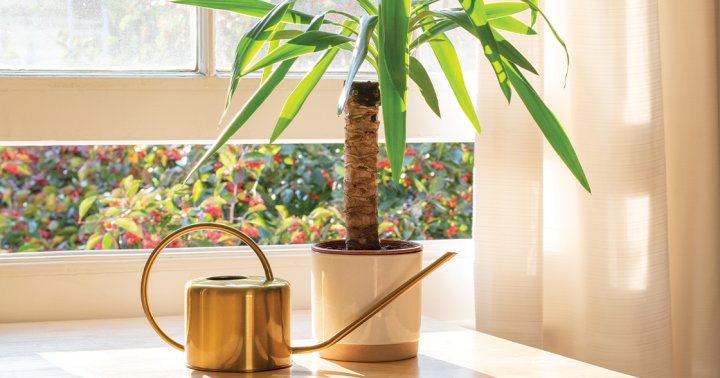10 Mindful Attitudes for Reducing Anxiety
Learn how to interrupt automatic reactions to anxiety while fostering inner peace and self-awareness with 10 key mindful attitudes. The post 10 Mindful Attitudes for Reducing Anxiety appeared first on Mindful.

Learn how to interrupt automatic reactions to anxiety while fostering inner peace and self-awareness with 10 key mindful attitudes.
By Bob Stahl August 1, 2023 AnxietyMindfulness is, in short, the practice of being aware of what’s happening or what you’re experiencing in the present moment. It’s being here and now without judgment. This is a capacity that all human beings possess. Whenever you bring awareness to what you’re directly experiencing via your senses, or to your state of mind via your thoughts and emotions, you’re being mindful.
Although more research is needed to illuminate the mechanisms at work, it’s clear that mindfulness allows us to interrupt automatic, reflexive fight, flight, or freeze reactions—reactions that can lead to anxiety, fear, foreboding, and worry. By bringing mindfulness to our actual experience in the moment, we can increase the likelihood of exerting more conscious control over our behaviors and attitudes. In so doing we learn to work with our intention, wise effort, will, discipline, and capacity to be kind to ourselves. These are all resources that can be harnessed and cultivated.
Mindfulness allows us to interrupt automatic, reflexive fight, flight, or freeze reactions—reactions that can lead to anxiety, fear, foreboding, and worry.
With that in mind, there are certain attitudes that play an important role when working with anxiety mindfully. These attitudes are central to mindfulness, and fostering them will help you develop and sustain your practice. It’s similar to adding nutrients to the soil to cultivate a vibrant and healthy garden. By attending to the attitudes of mindfulness, you can support your practice and help it flourish. And just as a well-tended garden bears seeds and fruit, so too will practicing mindfulness help foster all of the attitudes of mindfulness. Keep in mind that you may find slightly different lists of the attitudes of mindfulness in other places. Below are the qualities that we believe all play an important role in working with anxiety mindfully.
Volition or intention is the foundation that supports all of the other attitudes. Your intention, will, or volition is what sets you on the mindful path to working within yourself to gradually transform your anxiety and find more ease, freedom, and peace. By bringing intention to working with anxiety, you’re developing persistence in seeing yourself as whole, capable, and resourceful. Beginner’s mind is an aspect of mind that’s open to seeing from a fresh perspective. Meeting anxiety in this way, with curiosity, can play an extremely important role in transforming your experience. When you’re willing to adopt another point of view, new possibilities arise, and this can help you challenge habitual anxious thoughts and feelings.Patience is a quality that supports perseverance and fortitude when feelings of anxiety are challenging. Patience offers a broader perspective, allowing you to see that moments of anxiousness will pass in time.
Acknowledgment is the quality of meeting your experience as it is. For example, rather than trying to accept or be at peace with anxiety, you meet it and your experience of it as they are. You can acknowledge that anxiety is present and how much you don’t like it, even as you apply patience and see anxiety as your current weather system, knowing it will pass.
Nonjudgment means experiencing the present moment without the filters of evaluation. In the midst of anxiety, it can be all too easy to experience a secondary layer of judgment on top of the already uncomfortable anxious feelings. Stepping out of a judgmental mind-set allows you to see more clearly. When you let go of evaluations, many sources of anxiety simply fade away. When you feel anxiety, adopting a nonjudgmental stance can reset your mind into a more balanced state.
Nonstriving is the quality of being willing to meet any experience as it is, without trying to change it. With nonstriving, you understand the importance of being with things as they are—being with your experience without clinging to or rejecting what’s there. (Note that nonstriving relates to your present-moment experiences during meditation and doesn’t in any way negate the value of setting a wise intention to grow, learn, and change your relationship to anxiety.) In the midst of strong anxiety, the first response is often to flee or get out of the situation. If you can pause and really be with your experience without exerting any force against it, you gain the opportunity to know your experience more clearly and choose your response. You can also become less fearful of the physical sensations, thoughts, and emotions that accompany anxiety.
Self-reliance is an important quality for developing inner confidence. With practice, you can learn to trust yourself and your ability to turn toward your anxiety or any other uncomfortable feeling. In turning toward these feelings, it’s important to bring other qualities of mindfulness to your experience, allowing the feelings, acknowledging them, and letting them be.
Letting be or allowing is similar to nonstriving. It’s a quality that gives space to whatever you encounter in the moment. For example, if anxiety comes up as you meditate, you could choose to work with it by allowing the feeling to be there. In time, you can learn to ride a wave of anxiety until it dissipates, just as a storm runs its course in the sky.
Self-compassion is a beautiful quality of meeting yourself with kindness. Yet, sadly, so many people are their own greatest adversaries. Most of us probably would never treat another person the way we sometimes treat ourselves. Self-compassion will naturally grow as you practice meditation. And bringing this quality into your experience of anxiety can be like being your own best friend in the midst of hardship, offering your hand in a moment when help is needed. As your self-compassion grows, you will come to know that you are there for yourself, and your anxiety will naturally decrease.
Balance and equanimity are related qualities that foster wisdom and provide a broader perspective so that you can see things more clearly. From this perspective, you understand that all things change and that your experience is so much wider and richer than temporary experiences of anxiety and other difficulties.
Mindfulness Practice
Take some time right now to slowly reread the descriptions of the attitudes of mindfulness. After reading each one, pause and reflect upon what it means to you, especially as you begin to work with anxiety. Take a moment to try on each attitude and see how it feels. As you do so, tune in to how you feel in your body, mind, and emotions. Finally, after trying on each attitude, briefly describe your experience, noting how it felt. For example, did it feel natural or easy to adopt a particular attitude, or was it difficult? If it was difficult, why might that be? Was the attitude unfamiliar, or did you feel yourself resisting it in some way?
This article has been adapted from A Mindfulness-Based Stress Reduction Workbook for Anxiety by Bob Stahl PhD, Florence Meleo-Meyer MS, MA, and Lynn Koerbel MPH.

 KickT
KickT 































